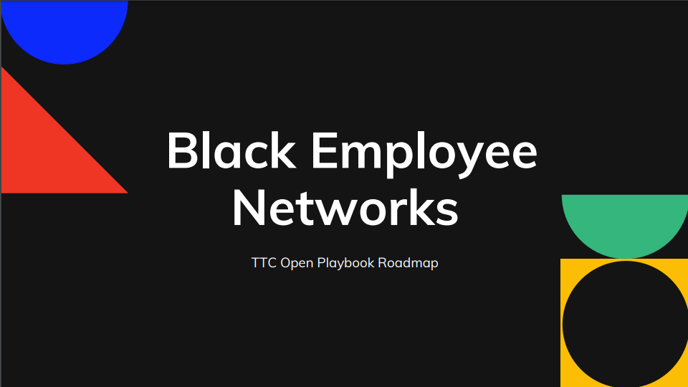ERGs directly impact a company's ability to build an inclusive culture. They understand a specific underrepresented group’s reality and act as an Ally.
Employer recommendations
Key factors to set ERGs up for success:
- Establish what you need and build a strategy. Be clear on why certain communities are recognised as an ERG, what regular reporting will be expected and how ERGs will collaborate.
- Define a clear purpose of having ERGs. What is the “why”? Have you any data which you can share around the representation of these different groups and their perceptions of inclusion within your workforce? If you do, share it transparently. Answer this question before it’s asked. Tie these groups to company values. How does being a part of this group align with the overall business approach and ethos? Why is this important to business leaders, as well as those from the communities they represent? The role of ERGs should not be to deliver the D&I strategy or to educate people managers and leaders.
- Secure executive support for each ERG - this is essential for continued success.
- Make sure they’re inclusive, not exclusionary: ERGs should be open to all, with no restrictions.
- Set ERGs up for success by sharing a toolkit. Check out an example: EY professional networks guide or watch this video about how KPMG set their networks up for success: Providing a clear framework and policy to support and increase the impact of your employee networks, d&i Leaders.
- Leverage the expertise of established, mature ERGs to share with newly formed ERGs eg share 'tips for starting out', 'tips for engagement', 'tips for managing your day job and leading an ERG', 'tips for engaging senior leaders'.
- Set a budget (partnerships and events cost money to run) and clear objectives for initiatives and activities then give them autonomy to deliver. Providing guidance on expected reporting will support a consistent and measurable approach.
- Communicate. Promote your ERGs and their objectives throughout the business and to new joiners through their onboarding.
Leverage all the ways that ERGs can contribute to your organisation:
- ERGs can build stronger external relations and better customer solutions. They can strengthen client relations and provide opportunities for business development; build links with affinity networks at other organisation and increase community impact.
- ERGs can build your brand as employer of choice, attract diverse talent and customers and help to gain external recognition and accreditation.
- ERGs can help to build a more inclusive culture and reveal potential DEI strategies. ERGs provide a collective voice for people’s concerns about issues that impact their identity group in the workplace and outside of the workplace and can promote inclusive leadership and behaviours. You might ask certain groups to consult over outreach strategies, for example, or to help design training programs that target specific areas of improvement.
- ERGs can increase employee engagement and improve retention, enable individuals to fulfil potential and facilitate networking across the organisation.
- ERGs can help to build future diverse leaders. They improve the experience of various identity groups in the workplace and can also help to more easily identify employees with leadership potential and connect them with the tools (e.g. sponsorship and mentorship opportunities) they may need to grow.
Organisations shared how they are maximizing the value and impact of their employee networks in the d&i Leaders Empowering Employee Networks Conference 2023.
Ask executive leaders to sponsor, support and recognise ERG activity:
- Identify opportunities and mechanisms to recognise and reward the ERG leader inputs in talent management mechanisms. Some organisations are now compensating their ERGs which you can read more about in this Culture Amp article.
- Recognise ERG efforts externally on LinkedIn.
- Recognise AG efforts and signpost events and opportunities in internal comms, meetings, townhall events etc.
- Ensure leaders are volunteering to act as Executive Sponsors and helping to activate membership of ERGs.
- Use ERGs to gather feedback on products, customer solutions (at the outset).
- Promote the opportunity to join ERGs groups continuously.
- Provide professional development opportunities to ERG members.
During the TTC's July 2020 Hackathon, teams created new products which included 'Education and Allyship', 'Recruiting Black Employees', 'Promoting, Developing and Retaining Black Employees' and 'Black Employee Networks'. Each roadmap details the high-level menu of the most important actions organisations should consider.
Further information
- Guide: How to set up an ERG for black and ethnic minority employees, CIPD
- Guide: How to set up ERG for disabled employees, Disability:IN
- Article: How to Form a Mental Health Employee Resource Group, HBR.
- Article: 5 Top Tips On Creating Successful Employee Resource Groups, Forbes.
- Article: 27 Employee Resource Groups Best Practices for 2023, Team Building
- Guide: Employee Resource Group Guidance, Indeed
- Summary Report: Empowering Employee Networks Conference 2023, d&i Leaders.
- Guide: Employee Resource Groups, The Clear Company
- TTC Video: Signatory Forum - Maturing Employee Resource Groups (ERGs)
- Video: Signatory forum: Global Employee Resource Groups, Tech Talent Charter
- Article: How to pay your ERG leaders, Culture Amp
- Guide: Selecting, Equipping and Rewarding ERG Leaders, Gartner (subscription required)
- Video: Providing a clear framework and policy to support and increase the impact of your employee networks, d&i Leaders

